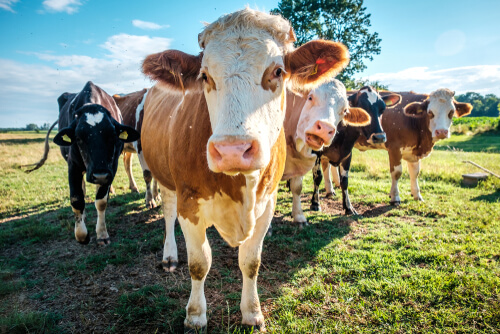On Tuesday, cattle futures prices plunged amid news from Canada that lab results confirmed one of its cows had died from Anthrax.
Live cattle futures for October delivery closed 1.14% lower at S184.85 per pound on September 26. At the same time, feeder cattle October futures ended the session at $253.82 per pound after a 2.06% decline.
September futures contracts will expire on Thursday, and livestock farmers are eager to sell their stock through direct cash business. However, bids remain low except on Thursdays and Fridays, a trend seen since early in the month.
Chicago Mercantile Exchange (CME) feeder cattle futures have hit a three-week low amid fund and chart-based selling. Similarly, live cattle futures stumbled to their lowest price in nine days.
Sharp declines in the stock market and fears of a possible government shutdown have also affected the commodity. The resulting economic anxiety has made consumers reluctant to spend on pricey beef, lowering the demand for futures contracts.
Insufficient demand has led to fewer cows being processed and sold, reducing the country’s available-for-sale supply of cattle meat. Livestock cold storage reports showed 421.63 million pounds of beef stocks in the US, 17.94% lower than last year.
As for other livestock, lean hogs for October delivery closed higher by 0.21% at $81.70 per pound. In contrast, milk September futures dipped by 0.35% to $16.92 per hundredweight (cwt).
Anthrax Cattle Fatality Reported in Saskatchewan
On September 25, a lab in the Canadian province of Saskatchewan verified that one cattle had died from Anthrax. Two other cow deaths from the same herd are also suspected of being caused by the bacillus anthracis bacteria.
Livestock can get Anthrax infection by foraging on grass contaminated by the bacteria’s spores. Pastures can develop a build-up of the spores after changes in soil moisture, such as from flooding and drying.
Infected animals usually die without showing any symptoms. Bison, cattle, sheep, goats, and horses are highly vulnerable to the disease, while swine, birds, and carnivores are more resistant.
Farm cats and dogs can also acquire the infection by interacting with contaminated carcasses. A vaccine for Anthrax is available.
News of the Anthrax cattle infection has market watchers on alert, as it might put consumers on guard. Some Americans might become hesitant to eat beef even though there are yet to be such cases in the US.











